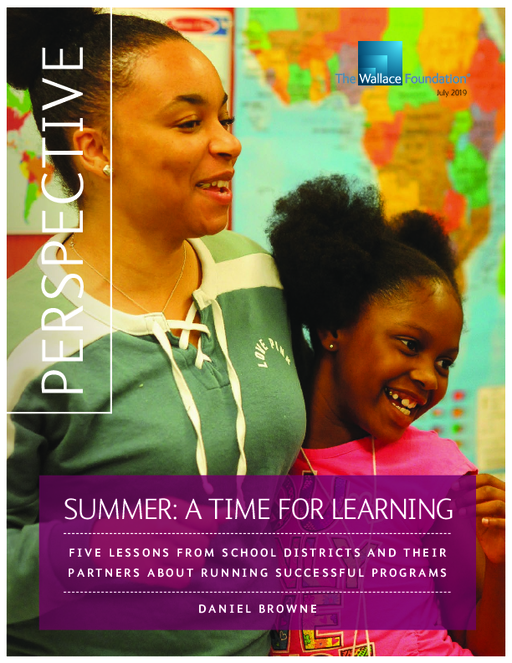- Author(s)
- Daniel Browne
- Publisher(s)
- The Wallace Foundation
Research Approach
This article presents key lessons from extensive research by the RAND Corp., including information on individual students’ achievement, attendance, demographic and educational background, and social and emotional learning.
Researchers analyzed these data using a number of methods. They included a randomized controlled trial (RCT). The RCT began in 2013, focusing on children who were in third grade in spring of that year. The 5,600 students who applied to summer programs in the five districts studied were randomly assigned to one of two groups—those selected to take part in the programs for two summers and those not selected.
Meaningful Benefits
Students who were selected to take part in a summer program scored higher on the math test taken in the fall of 2013, after the first summer, than those who applied but were not selected. This edge in math was statistically significant but faded out over time. One possible explanation is that nearly half of the students did not show up for the second summer. In an RCT, students selected to take part in a program are included in the analysis whether they show up or not. Therefore, no-shows would dilute any effect there may be on the students who do attend.
Additional correlational analyses, controlled for prior academic performance, showed meaningful benefits for frequent attendees in math, reading, and social and emotional learning after the second summer. Benefits persisted through the following school year.

